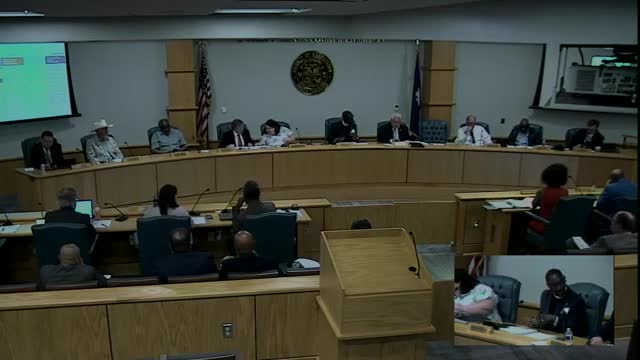Council considers zoning ordinance revisions to boost affordable housing development
April 26, 2025 | Charleston County, South Carolina
This article was created by AI summarizing key points discussed. AI makes mistakes, so for full details and context, please refer to the video of the full meeting. Please report any errors so we can fix them. Report an error »

The Charleston County Council convened on April 24, 2025, to discuss strategic goals and zoning regulations, focusing on housing development and community preservation. The meeting began with a review of the council's strategic goals, prompting discussions on the timeline for revising the Zoning and Land Development Regulations (ZLDR). Council members expressed varying opinions on the necessity and urgency of these revisions, with some questioning whether a two-year lead time was still appropriate.
A significant point of discussion was the council's previous incentives for developers to include affordable housing in their projects. It was noted that while generous density bonuses were offered for developments that included affordable units, market conditions were hindering progress. Developers were reportedly reluctant to pursue these incentives without additional support, highlighting a disconnect between policy and market realities.
Council member Grabovsky voiced strong opposition to the strategic goal of maximizing housing development opportunities, citing concerns over overdevelopment and the loss of rural character in certain areas. He emphasized the need to preserve the existing community landscape, particularly in regions like Northern Mount Pleasant and McClellanville.
The council also addressed the issue of "missing middle housing," which includes duplexes and triplexes. The Planning Commission has previously recommended allowing these housing types to be approved administratively, but the council has maintained a more restrictive approach. This has created barriers for developers seeking to provide alternative housing options. The Planning Commission is expected to revisit this recommendation, aiming to ensure that new housing blends with existing neighborhood aesthetics.
As the meeting progressed, council members discussed the voting process for prioritizing strategic goals. A QR code was introduced for members to vote on their top three priorities, although there was some confusion about participation rules. Ultimately, it was decided that all council members would have the opportunity to vote, with the results guiding future discussions and potential policy changes.
In conclusion, the Charleston County Council's meeting highlighted ongoing tensions between development incentives and community preservation. The discussions underscored the complexities of balancing housing needs with the desire to maintain the character of local neighborhoods. Future meetings will likely continue to address these critical issues as the council seeks to refine its strategic goals and zoning regulations.
A significant point of discussion was the council's previous incentives for developers to include affordable housing in their projects. It was noted that while generous density bonuses were offered for developments that included affordable units, market conditions were hindering progress. Developers were reportedly reluctant to pursue these incentives without additional support, highlighting a disconnect between policy and market realities.
Council member Grabovsky voiced strong opposition to the strategic goal of maximizing housing development opportunities, citing concerns over overdevelopment and the loss of rural character in certain areas. He emphasized the need to preserve the existing community landscape, particularly in regions like Northern Mount Pleasant and McClellanville.
The council also addressed the issue of "missing middle housing," which includes duplexes and triplexes. The Planning Commission has previously recommended allowing these housing types to be approved administratively, but the council has maintained a more restrictive approach. This has created barriers for developers seeking to provide alternative housing options. The Planning Commission is expected to revisit this recommendation, aiming to ensure that new housing blends with existing neighborhood aesthetics.
As the meeting progressed, council members discussed the voting process for prioritizing strategic goals. A QR code was introduced for members to vote on their top three priorities, although there was some confusion about participation rules. Ultimately, it was decided that all council members would have the opportunity to vote, with the results guiding future discussions and potential policy changes.
In conclusion, the Charleston County Council's meeting highlighted ongoing tensions between development incentives and community preservation. The discussions underscored the complexities of balancing housing needs with the desire to maintain the character of local neighborhoods. Future meetings will likely continue to address these critical issues as the council seeks to refine its strategic goals and zoning regulations.
View full meeting
This article is based on a recent meeting—watch the full video and explore the complete transcript for deeper insights into the discussion.
View full meeting